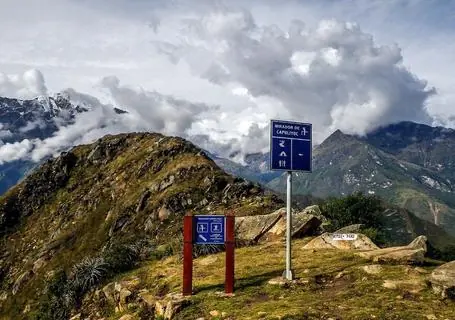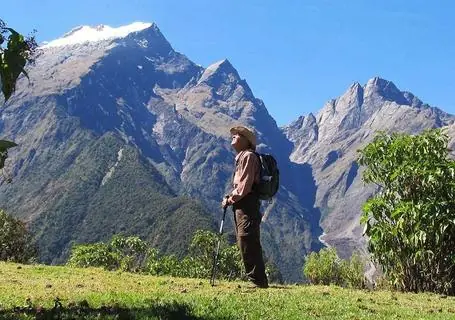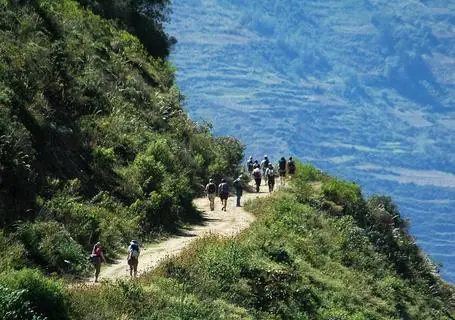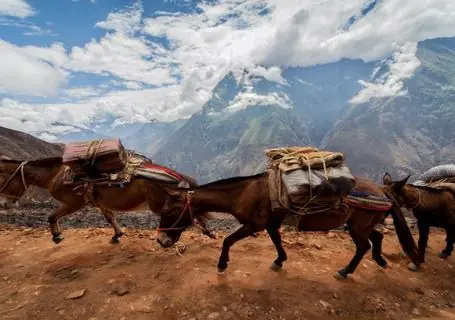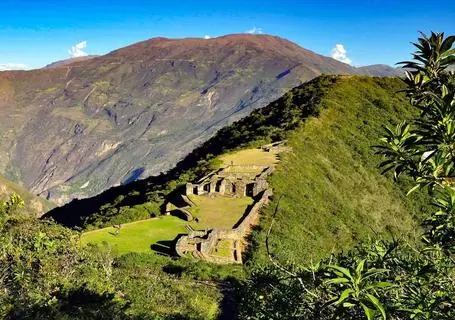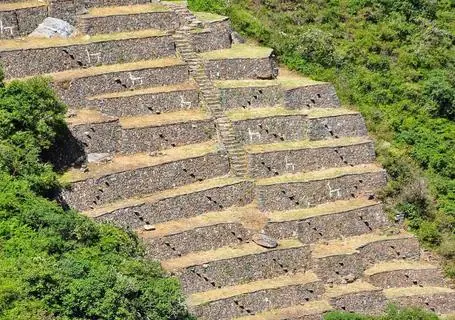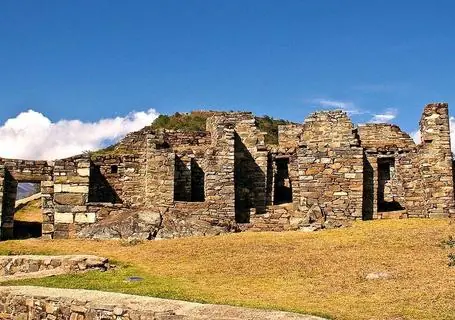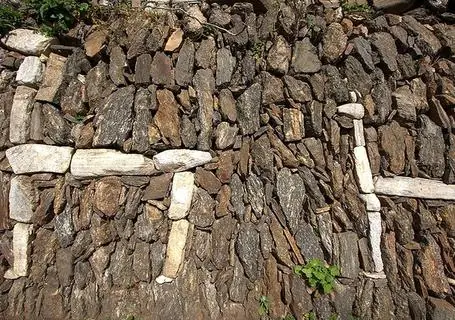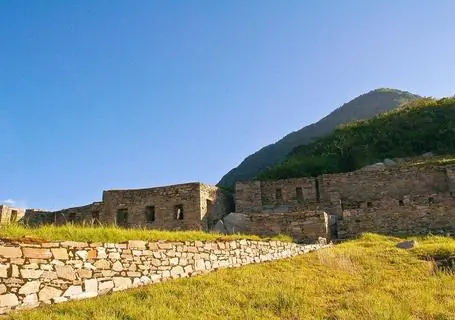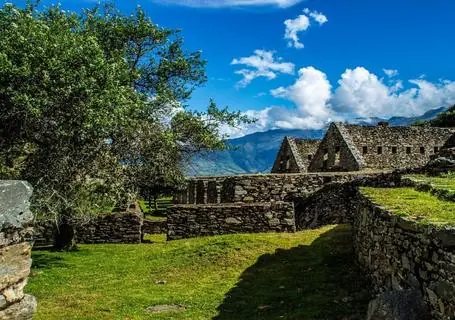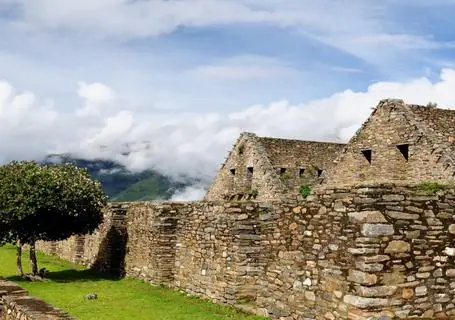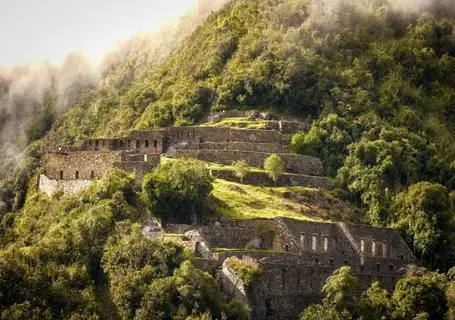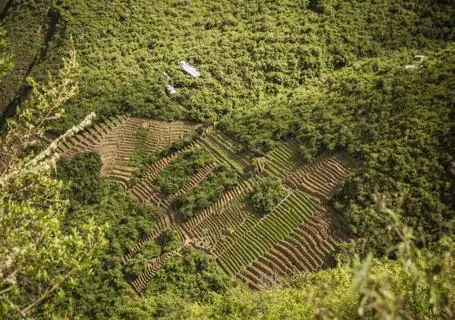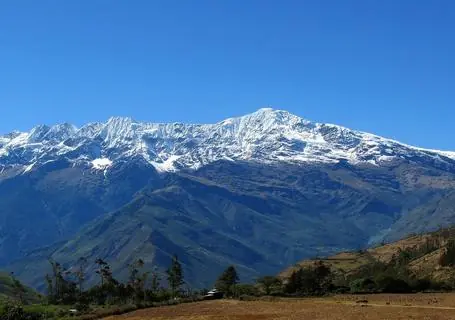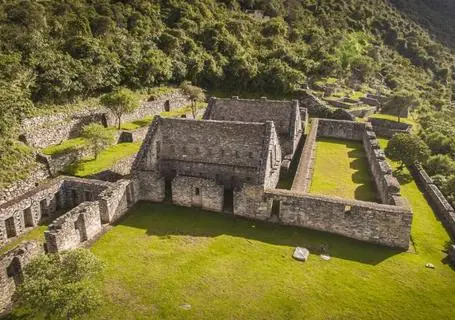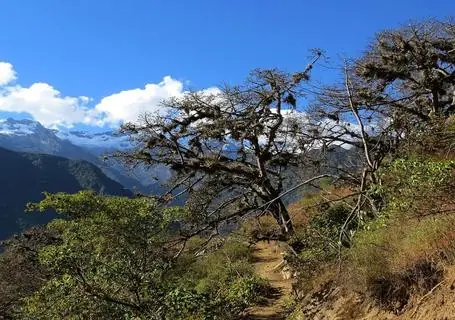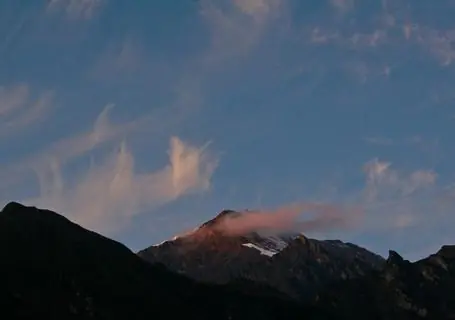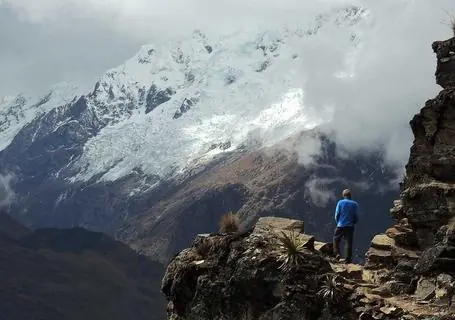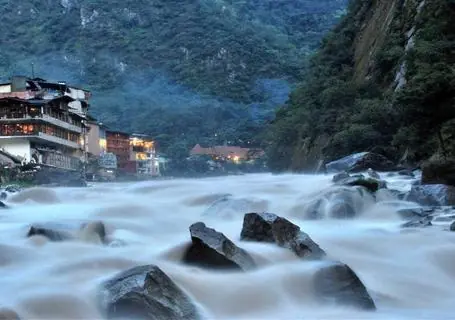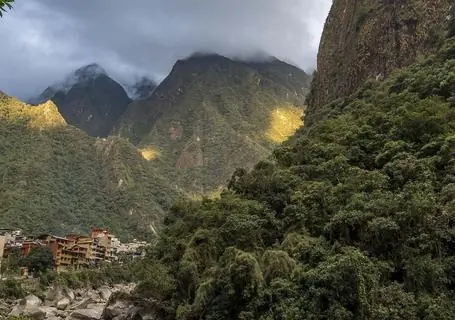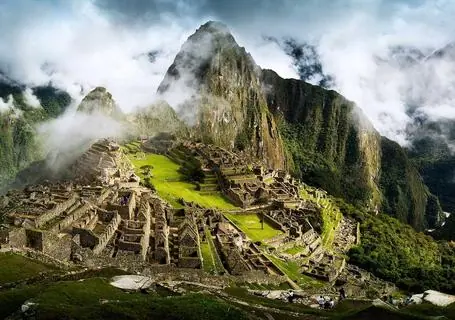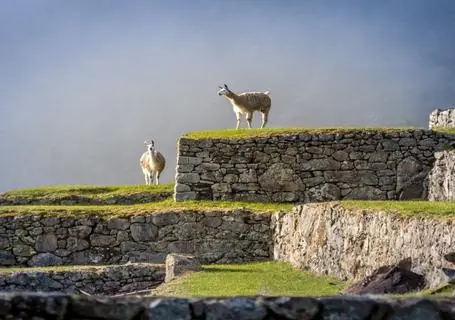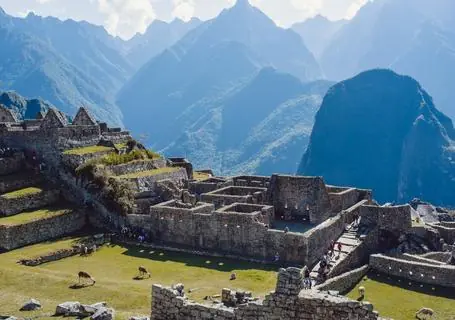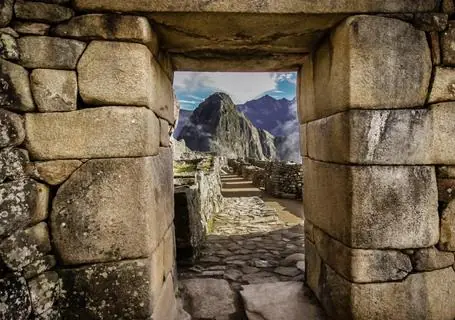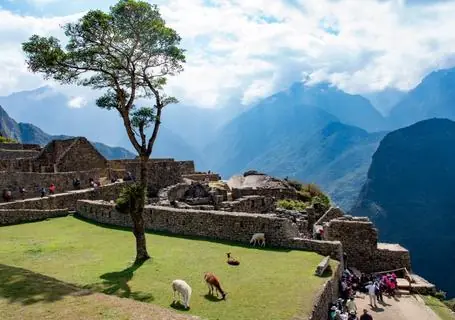Choquequirao Trek To Machu Picchu - 9 Days
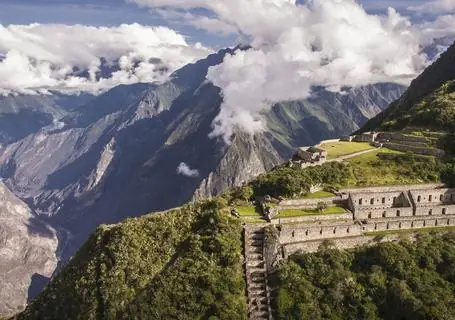
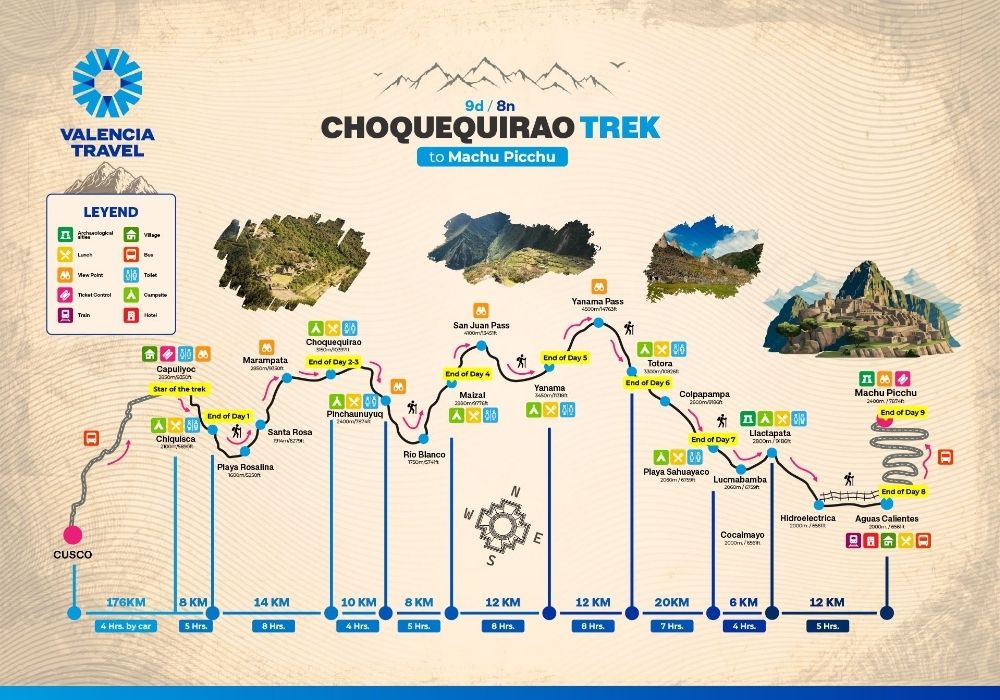
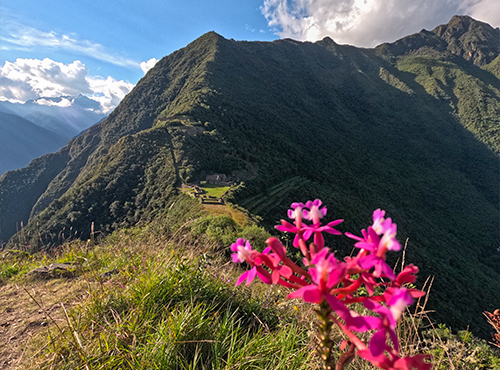
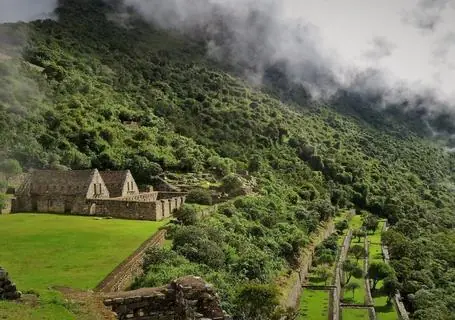
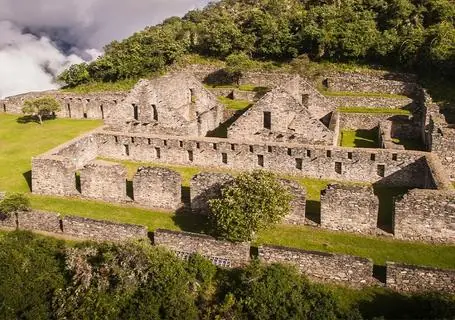

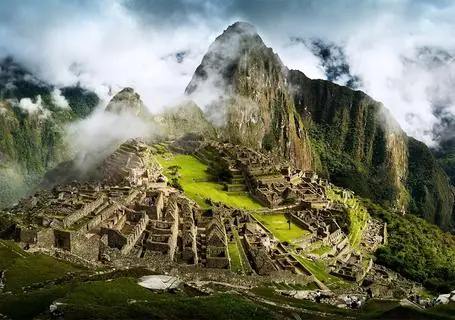 View All PhotosView All Photos
View All PhotosView All PhotosAdventure
Moderate - Demanding
Choquequirao, Cusco, Machu Picchu
Hiking / Trekking, Archaeological / Architecture
cardinfo-price-per-adult
| cardinfo-text-5 | ||
| cardinfo-text-7 | Not included | |
| cardinfo-text-8 | cardinfo-not-included | |
cardinfo-text-10
h2-title-1
Our Choquequirao Trek to Machu Picchu takes you to two of the most impressive Inca archaeological sites in South America. Machu Picchu, of course, is one of the most famous archaeological sites in the world, a true wonder that everyone has heard about, and the main attraction on your Peru vacation package. This unique trek also takes us to Choquequirao, a stunning site that is equal in size to Machu Picchu but receives far fewer visitors.
The Choquequirao Archaeological Complex is very similar to Machu Picchu, both in structure, intricacy, and geographical setting. However, unlike the world-famous Machu Picchu, Choquequirao has only started to open up to visitors in recent years. The Choquequirao trek is challenging, but the route passes through some of the most spectacular scenery in Peru. And with plans afoot to build a cable car to Choquequirao, making it far more accessible, now is the time to visit this stunning Inca Archaeological site before it becomes one of Peru’s next tourist hotspots.
The Choquequirao archaeological park is described as a lost city of the Incas. Scholars believe it was built during the same era as Machu Picchu, in the 15th century. Choquequirao sits 10,000 feet above sea level and is about the same size as Machu Picchu. According to experts, it was built by the Inca emperor Pachacuti and expanded by his son Tupaq Inka Yupanki. The city spans about 2.3 square miles, but much of it remains covered in jungle. Roughly one-third is accessible to explorers.
Favorite sights in the ancient Incan city include the spacious plaza, the house of the priests, the ceremonial platform, and the site’s many llama etchings. While similar in architecture and history to Machu Picchu, Choquequirao has a drastically different feel upon arrival. Visitors can only access the city on foot, by a trekking expedition along the Choquequirao hike. The difficulty of the Choquequirao trek deters many tourists from making the journey. When you arrive, you and your group may be the only ones exploring this ancient Incan city. You won’t be distracted by sound or camera flashes on the Choquequirao trail or at the Choquequirao Archaeological Complex. The remoteness and current lack of tourists are significant draws for this unforgettable Choquequirao Trek tour.
Combining these two incredible sites gives you the chance to see far more than you would if you only hiked the Classic Inca Trail trek to Machu Picchu or the Choquequirao trek individually. It also offers a true trekking experience that will take you off-grid for days, trekking through remote locations that encompass a wide spectrum of geographical landscapes and varied ecosystems. It’s a physical challenge, that’s for sure, but we’ll be with you every step of the way, with our guides, porters, and cooks. The Choquequirao trek is a true adventure, and one you’ll never forget.
 Free Brochure
Free BrochureReady to explore? Download the brochure and start planning!
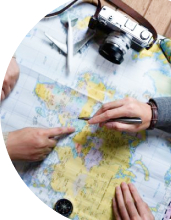
Your FREE travel expert is just a click away
Or Call us now! (888) 803 8004
h2-title-2
Day 1:Cusco - Capuliyoc and Chiquisca
Our Choquequirao Trek to Machu Picchu starts when we pick you up from your hotel in Cusco. We’ll first drive for about four hours to the village of Cachora. We will continue to Capuliyoc where we begin our Choquequirao hike. We will load our trekking gear onto mules and climb for two and a half hours to the Capuliyoc pass, which sits at 2,890 m (9,481 ft.) above sea level. We’ll then descend the other side of the pass, heading into the beautiful Apurimac Valley, where we have spectacular views of snow-capped peaks in the distance and the valley spreading out before us. This section will take about 2.5 hours, after which we’ll reach our first campsite at Chiquisca, where we’ll have dinner and spend the night.
Hiking Time: 5 hours.
Hiking Distance: 8 km / 4.9 miles.
Highest Point: 2,850 m / 9,350 ft.
Lowest Point: 2,100 m. / 5,890 ft.
- Meals: Lunch, Dinner
- Tour Guide: Local Tour Guide: English/Spanish
- Transfer: Cusco - Capuliyoc - Choquequirao Trailhead
- Entrance Fee: Choquequirao
- Horseman and Mules: To carry cooking and camping equipment
- Camp site: Chiquisca (Tent per 2 people).
Day 2:Chiquisca to Choquequirao
We’ll have an early breakfast on Day 2 of our Choquequirao Trek before setting off in the cool morning air. First, we’ll descend for one hour Approx. to Playa Rosalina, where we will cross the Apurimac River. Next is a steep climb of about three hours. It's quite tough going, for sure, but you’ll be constantly rewarded with the spectacular views from the trail, as well as the wide variety of flora and fauna you’ll find on this side of the valley. We will continue along the trail past beautiful bromeliads, orchids, and bamboo stalks, and hopefully see some colorful bird species such as quetzals, toucans, and a variety of hummingbirds.
Eventually, we’ll arrive at the community of Santa Rosa where we will stop for a rest in the shade. Pushing on, we’ll continue to climb for another 3 hours until we get to Marampata, where we’ll have lunch and a rest. After a final two hours of easy trekking, we’ll arrive at the Choquequirao campsite, at 3,103 m (10,178 ft). Tired but exhilarated, we’ll eat and settle down for the night. If the weather is clear, the sunset from the campsite is truly stunning, and we may even see some condors as they soar through the valley below.
Hiking Time: 8- 9 hours..
Hiking Distance: 14 km / 8.7 miles.
Highest Point: 3,150 m / 10,397 ft.
Lowest Point: 1,600 m / 5,250 ft.
- Meals: All Included
- Tour Guide: Local Tour Guide: English/Spanish.
- Horseman and Mules: To carry cooking and camping equipment.
- Camp site: Choquequirao (Tent per 2 people).
Day 3:Exploring Choquequirao - The Cradle of Gold
All our tough trekking will be rewarded on Day 3 when we wake up early to explore the Choquequirao Archaeological Complex. Your guide will take you around the site, showing you all the most important sections and explaining the history of Choquequirao. You’ll learn about the Inca Empire, its traditions and culture, as well as the close relationship between Choquequirao and Machu Picchu.
Choquequirao has not been explored or studied as comprehensively as Machu Picchu, despite having been discovered earlier than its more famous counterpart. The first non-Inca visitor to Choquequirao was the explorer Juan Arias Díaz in 1710, two centuries before Hiram Bingham’s rediscovery of Machu Picchu. But the site lay abandoned and forgotten until recent years when archaeologists and tourists began to pay more attention to Choquequirao. Still, even with more attention turned toward it, only about 30-40% of the archaeological site has been explored, and many secrets remain to be discovered.
We currently know that Choquequirao is divided into 12 sectors, with Inca agricultural terraces common throughout the complex. Most of the buildings, meanwhile, appear to have been built for ceremonial purposes, as residences of the priests, or for food storage. The fact that we don’t know more about Choquequirao only adds to the wonder of the tour, as your imagination tries to piece together a picture of what life was like at this vast and isolated site atop a truncated hilltop.
You’ll have plenty of time to explore Choquequirao, both with your guide and then on your own. Afterward, we’ll return to the campsite for the evening.
Hiking Time: 3-4 hours.
Hiking Distance: 8 km / 5 miles.
Highest Point: 3,150 m / 10,397 ft.
Lowest Point: 3,150 m / 10,397 ft.
- Meals: All Included
- Tour Guide: Local Tou Guide: English/Spanish
- Camp site: Choquequirao (Tent per 2 people).
Day 4:Choquequirao Archaeological Complex to Rio Blanco and Maizal
Day 4 of our Choquequirao Trek to Machu Picchu begins with a hearty breakfast, after which we will begin the ascent from our campsite up to the Choquequirao pass, at 3,250 m (10,660 ft). As we are hiking, we’ll enter the cloud forest, where polylepis trees, epiphytes, and bromeliads grow. On the other side of the pass, we’ll descend towards the Yuracmayo River, (Rio Blanco) passing some Inca agricultural terraces that once supplied Choquequirao.
We will continue on to Pinchaunuyuc where our incredible chef will prepare an extraordinary lunch on this remote trail.
After a few hours of trekking, we’ll reach the river, which we will cross. Heading on, we’ll start trekking uphill again until we reach Maizal, from where we’ll have magnificent views of the Yuracmayo and Yanama gorges as they merge, the river below rushing towards the Apurimac Canyon. We’ll set up camp at this natural viewpoint, looking out to the west. Your cook will prepare a tasty dinner while you enjoy the sunset from this stunning location.
Hiking Time: 9 hours
Hiking Distance: 18 km / 11. 2 miles
Highest Point: 3,250 m / 10,660 ft.
Lowest Point: 1750m / 5,741 ft.
- Meals: All Included
- Tour Guide: Local Tour Guide: English/Spanish.
- Horseman and Mules: To carry cooking and camping equipment.
- Camp site: Maizal (Tent per 2 people).
Day 5:Maizal to Minas Victoria and Yanama
After breakfast, the Choquequirao Trek to Machu Picchu begins on a steeply-climbing trail up towards Mina Victoria, an old silver and copper mine used by the Incas and later the Spanish colonials. From here we’ll hike along a hill called Qoriwayrachina, an Inca site that was discovered relatively recently, and which few people have visited. Probably connected to the nearby mines, the hills around Qoriwayrachina are covered with stones from more than 200 structures built at this Inca outpost.
After exploring this site, we’ll head up over the San Juan pass at about 4,100 m (13,451 ft), the highest point so far reached on our Choquequirao trek. Near here we’ll have a well-deserved lunch, after which we’ll begin our descent to the village of Yanama, with views of Mount Pumasillo towering above us and our campsite below. We’ll spend the night at Yanama.
Hiking Time: 8 hours
Hiking Distance: 12 km / 7.4 miles.
Highest Point: 4,100 m / 13,451 ft.
Lowest Point: 3,450 m / 11,318 ft.
- Meals: All Included
- Tour Guide: Local Tour Guide: English/Spanish.
- Horseman and Mules: To carry cooking and camping equipment.
- Camp site: Yanama (Tent per 2 people).
Day 6:Yanama to Totora
Today will be a solid day of trekking as we make our way out of the Yanama Valley, passing through fields where farmers grow their potato crops and tend their livestock. Here you can see the daily Andean life as it has been for centuries. We then have a challenging trek up to the Yanama Pass, which sits at around 4,500 m (14,763 ft). As we cross over the pass, we’ll have sublime views of the Salkantay and Humantay mountains, especially if it’s a clear day. From here we’ll take a winding trail down to the Totora Valley below, where we’ll camp near a traditional rural village.
Hiking Time: 8 hours
Hiking Distance: 12 km / 7.4 miles.
Highest Point: 4,500m / 14,763 ft.
Lowest Point: 3,330 m / 10,826 ft.
- Meals: All Included
- Tour Guide: Local Tour Guide: English/Spanish.
- Horseman and Mules: To carry cooking and camping equipment.
- Camp site: Totora (Tent per 2 people).
Day 7:Totora to La Playa
After the high-altitude trekking of the previous day, Day 7 will feel like a fairly breezy trek as we hike along the pathway of the Salkamayo River. As we descend, we’ll pass through an area of increasingly lush vegetation, where we’ll find a paradise of crystalline waterfalls, plentiful passion fruit, and coffee plantations. We will have lunch in Colpapampa which is a stop-off point along The Salkantay trek, and Vilcabamba Trek, where all these trails meet up.
In the afternoon we’ll reach our campsite at the village of La Playa, where you’ll have plenty of free time to relax and take a swim in the river as we set up the camp and prepare another excellent dinner on your Choquequirao to Machu Picchu trek.
Hiking Time: 7 hours
Hiking Distance: 20 km / 12.4 miles
Highest Point: 3,300m / 10,826 ft.
Lowest Point: 2,060 m / 6,759 ft.
- Meals: All Included
- Tour Guide: Local Tour Guide: English/Spanish.
- Camp site: La Playa (Tent per 2 people).
Day 8:La Playa to Aguas Calientes
Today will be our final day of the Choquequirao Trek to Machu Picchu, taking us within easy reach of Machu Picchu. After breakfast, we will cross the river and start climbing up through coffee and fruit plantations until we reach El Mirador, a wonderful spot at 2,860 m (9,381 ft) with exceptional views of Machu Picchu.
We’ll then continue on towards the Inca site of Llaqtapata, which was discovered by Hiram Bingham in 1912, but only extensively explored and mapped in 2003. Llaqtapata’s location along the Inca Trail suggests that it was once an important rest stop and roadside shrine on the journey to Machu Picchu. After exploring the site, we’ll have lunch and enjoy the views of Machu Picchu and Salkantay. Continuing on, we’ll trek downhill for about two hours until we reach the Hidroelectrica (Hydroelectric Station), a well-known landmark along various routes to Machu Picchu. From here we’ll board the train for a short ride to Aguas Calientes, the vibrant town that sits below Machu Picchu. Once we arrive in Aguas Calientes, we’ll take you to your hotel where you can have a well-deserved rest and a hot shower. And then you’ll probably want a reasonably early night because tomorrow we wake up early for the tour of our final destination: Machu Picchu!
Hiking Time: 9 hours.
Hiking Distance: 18 km / 11.19 miles.
Highest Point: 2,800 m / 9,186 ft.
Lowest Point: 2,000 m / 6,561 ft.
- Meals: All Included
- Tour Guide: Local Tour Guide: English/Spanish.
Day 9:Aguas Calientes - Machu Picchu – Cusco
To best appreciated Machu Picchu, we’ll wake up early in the morning so we can get to the citadel in good time. You’ll have time for breakfast first, and then your guide will pick you up from the hotel at around 5:40 a.m. We’ll then walk to the bus departure point for the short but zigzagging ascent up the road to Machu Picchu.
We’ll then pass through the entrance gates into the Machu Picchu archaeological site. Here you’ll begin your guided walking tour with an experienced and highly knowledgeable guide. Our tour of Machu Picchu will last about two hours and will take you to all the most famous and the most spectacular parts of the extensive archaeological complex. These include the House of the Guardian, the Intihuatana, the Temple of the Sun, the Sacred Plaza and other key locations. And as we walk around, we’ll have spectacular views of the agricultural terraces of Machu Picchu and across to the surrounding mountains and plunging gorges.
Once we’ve finished our tour of Machu Picchu, we’ll take the bus back down to Aguas Calientes where you can relax and have lunch (not included) before we board the train back to Poroy / Ollantaytambo and then Cusco. Upon arrival at the station, we’ll be waiting to take you back to your hotel in Cusco, where you’ll finish your incredible Choquequirao Trek to Machu Picchu.
- Meals: Not Included
- Tour Guide: Loca Tour Guide: English/Spanish.
- Bus: Aguas Calientes - Machu Picchu - Aguas Calientes (20 minutes approx).
- Entrance Fee: Machu Picchu Citadel
- Train Ticket: Aguas Calientes to Ollantaytambo or Poroy.
- Transfer: Ollantaytambo Train Station - Cusco Hotel
h2-title-3
Secure your spot on the trip now with our real-time availability information.
Act quickly—these spots sell out fast!
h2-title-4
whats-included-title
- Maximum group size is 16 people, the excursion leaves with at least 2 people.
- Briefing for the tour one day before the trek at 19h00.
- Accommodation: Chikisca campsite (1 night), Choquequirao campsite (2 nights), Maizal campsite (1 night), Yanama campsite (1 night), Totora valley campsite (1night), La Playa campsite (1 night).
- Transport: Private or shared.
- Your Journeys Highlight Moment: Choquequirao and Machu Picchu
- Meals: 7 breakfast, 8 lunches, 8 dinners
- Choquequirao and Machu Picchu entrance fee.
- Pack horses that will carry the camping equipment, the cooking equipment, and food.
- Mules to carry your personal gear that weighs up to 7 kilos.
- Train ticket from Aguas Calientes to Poroy / Ollantaytambo station.
- Round trip bus ticket from Aguas Calientes to Machu Picchu.
- First aid kit, if you are taking any medications, please bring your prescription with you.
- Professional Guided Tour ENG.
- An assistant guide for groups of more than 9 people.
- A chef trained for cooking on trekking routes and an assistant cook.
- Complete set of kitchen equipment and utensils.
- Dining room equipment which includes tables, chairs, and a dining tent.
- Water (you need to bring water for the first morning then we will provide you with previously boiled drinking water).
- 24/7 support and emergency line are available throughout the itinerary.
whats-not-included-title
- Medical and emergency evacuation insurance.
- Trip cancellation insurance or any other travel insurance.
- Evacuation: in the event of a serious medical injury, we will coordinate with your travel insurance company to arrange evacuation.
- Any activity not described in What's Included.
- Meals and drinks are not specified in the itinerary.
- Trekking equipment such as walking sticks, sleeping bag, or inflatable mattress.
- Tips/Gratuities.
h2-title-5

specialist-box-title
Natividad Cortez
specialist-box-phrase
top-tours-title
top-tours-info
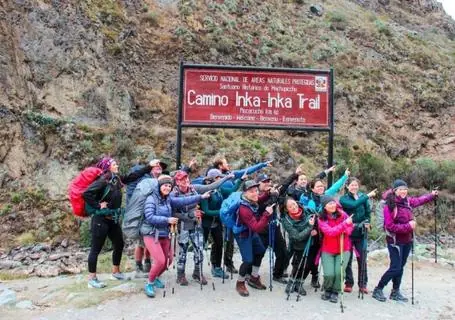
Trek Along the Inca Trail To Machu Picchu
7daysTrek Along The Inca Trail To Machu Picchu with Valencia Travel. We are a renowned Peruvian tour company offering trekking experiences throughout Peru.
card-type-tagAdventure
card-activity-tagModerate - Demanding
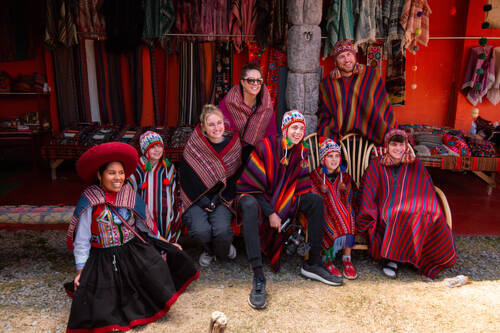
Classic Peru Trip
7daysValencia Travel's classic Peru trip is a bucket-list adventure. This 7 Day trip will take you on unforgettable experiences throughout the Peruvian heartland.
card-type-tagCultural, Gastronomy
card-activity-tagEasy
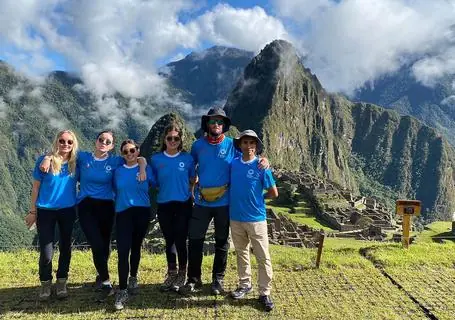
Classic Inca Trail
4daysThe Inca Trail trek to Machu Picchu is the ultimate bucket list hiking experience! Join us on this Classic 4 Day & 3 night Inca Trail Hike!
card-type-tagAdventure
card-activity-tagModerate - Demanding
asso-info-title
asso-info-description
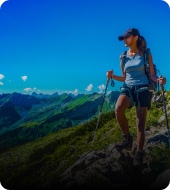 Aventure
Aventure
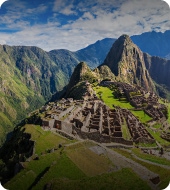 Cultural
Cultural
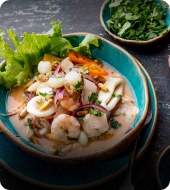 Gastronomy
Gastronomy
 Wellness
Wellness
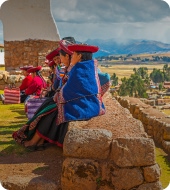 Local Living
Local Living
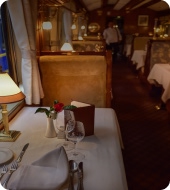 Luxury
Luxury
